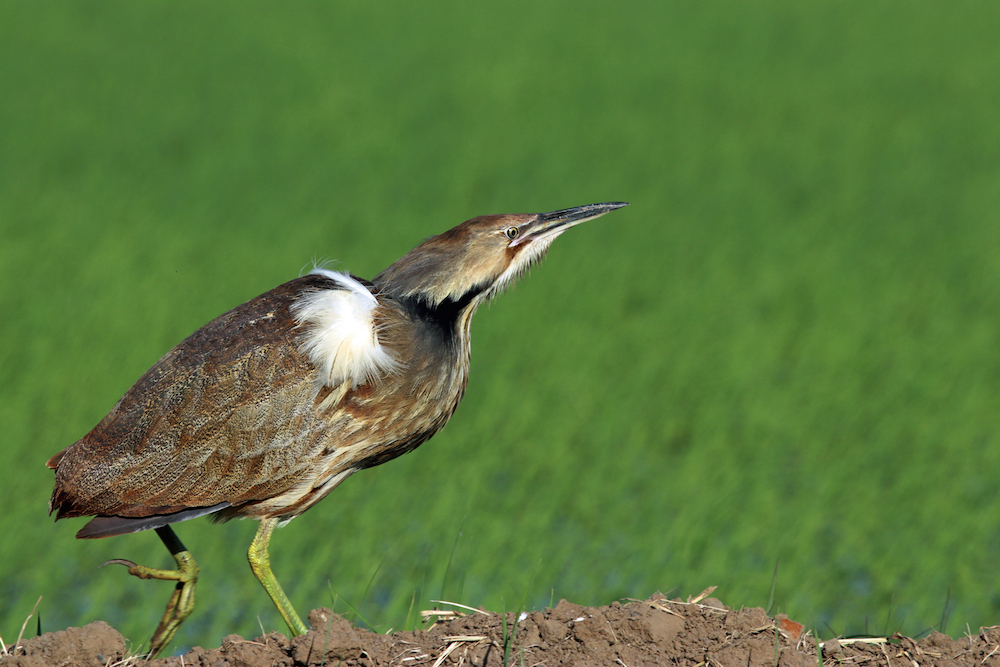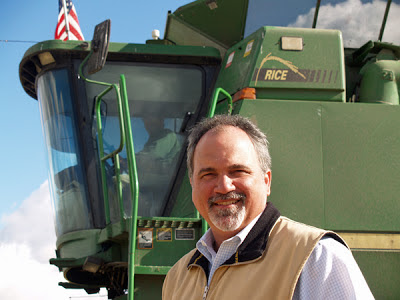American Bitterns: One of many Birds using Rice Farms in Breeding Season
By Paul Buttner
Cruising through California rice country this time of year always has that positive feeling of renewal. Growers are just finishing up rice planting operations and we start to see all those little green seedlings pop up through the five inches of water in these shallowly flooded rice fields. And, along with the new rice plants come a variety of beautiful birds that use these fields.

One of my favorite birds that makes good use of California rice fields is the American Bittern. This bird can be a bit hard to find. In fact, I commonly hear them more than I see them. Often in the early evenings at the edge of a rice field I can hear their very distinct sound that I associate with water going down a drainpipe. It sounds kind of like “ker-lunk, ker-lunk” mixed in with some “clicking” sounds. May sound like a funny description but click here to listen for yourself. What do you think?
Bitterns are one of several species that have benefitted greatly from the presence of 500,000 acres of flooded rice in the Valley. I often talk about how the managed wetlands and ricelands can both provide habitat for birds at different times depending upon the relative condition of these habitats throughout the year. Bitterns certainly capitalize on all the flooded rice fields in spring and summer. They slowly wade through the fields in search of small fish, aquatic insects, crayfish and other crustaceans they can find in the fields and adjacent water delivery channels.

Check out these beautiful pictures shot by Jim Morris. They really capture the beautiful detail of these elegant birds, including the rarely seen tuft of white feathers near their shoulders that these birds can display in the midst of courtship. These birds are classified as herons in the same group as the Great Blue Heron and Great/Snowy Egrets that are more commonly seen through Sacramento Valley rice country but they are more modest in size, ranging 24 to 33 inches tall and weighing about 13 to 18 pounds.
Grab the binoculars and take a drive through California rice country. It’s a great time see nesting birds in both rice fields and the state and federal refuges sprinkled throughout the Valley. These public areas can all be located on this map.






